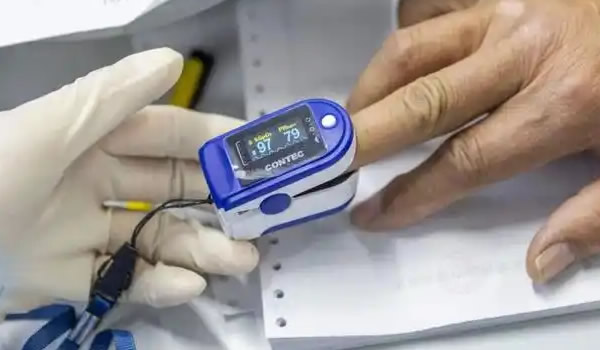Diabetes is a rapidly growing public health crisis in Asia, home to more than half of the world’s diabetic population. With urbanization, lifestyle changes, and genetic predisposition, diabetes rates are soaring. This article examines diabetes management in Asia, highlighting traditional treatment approaches, lifestyle modifications, and cutting-edge therapies such as GLP-1 receptor agonists, SGLT2 inhibitors, and digital health tools.

The Diabetes Epidemic in Asia
- Global perspective: Over 537 million adults worldwide live with diabetes.
- Asia’s share: Nearly 60% of diabetes patients are in Asia, with China and India leading globally.
- Youth onset: Increasing cases of type 2 diabetes among younger adults and even adolescents.
- Economic cost: Billions spent annually on treatment and complications such as kidney disease, stroke, and blindness.
Types of Diabetes
- Type 1 Diabetes: Autoimmune destruction of insulin-producing cells; less common in Asia but increasing.
- Type 2 Diabetes: Most prevalent in Asia; driven by obesity, sedentary lifestyles, and genetic factors.
- Gestational Diabetes: Increasing with rising maternal age and obesity rates.
Traditional Diabetes Management
1. Lifestyle Interventions
- Diet: Emphasis on low-glycemic foods, reduced refined carbs, portion control.
- Exercise: Aerobic activity, strength training, and daily physical movement.
- Weight management: Essential to reduce insulin resistance.
2. Medications
- Metformin: First-line therapy, widely used across Asia.
- Sulfonylureas: Effective but risk hypoglycemia; still common in resource-limited settings.
- Insulin therapy: Essential for type 1 diabetes and advanced type 2 diabetes.
Emerging Therapies in Asia
1. GLP-1 Receptor Agonists
- Drugs like liraglutide and semaglutide improve blood sugar control and promote weight loss.
- Particularly relevant in Asia due to dual diabetes-obesity epidemic.
- Expanding availability in China, Japan, and Southeast Asia.
2. SGLT2 Inhibitors
- Medications like dapagliflozin and empagliflozin reduce blood sugar by increasing glucose excretion in urine.
- Also shown to improve heart and kidney outcomes—highly relevant for Asian populations prone to CKD and heart disease.
3. DPP-4 Inhibitors
- Widely used in Asia (e.g., sitagliptin, vildagliptin).
- Lower risk of hypoglycemia, suitable for elderly patients.
4. Insulin Innovations
- Long-acting analogs and insulin pumps increasingly used in advanced care centers.
- Cost remains a barrier in lower-income countries.

Digital Health and Diabetes Care
- Mobile apps: Tracking blood sugar, medication, and lifestyle habits.
- Telemedicine: Expanding access to endocrinologists in rural Asia.
- AI-driven predictive analytics: Early detection of diabetes complications.
- Continuous glucose monitors (CGMs): Becoming more accessible across Asia.
Regional Insights
- China: Largest diabetic population globally; government initiatives promoting lifestyle changes and affordable medications.
- India: “Diabetes capital of the world”; urban-rural disparities remain a challenge.
- Japan: Advanced in digital health and precision medicine for diabetes.
- Southeast Asia: Rising prevalence due to urbanization and lifestyle shifts.
- Middle East & Gulf States: High prevalence due to obesity and sedentary living.
Prevention Strategies
- Community Programs Public campaigns promoting diet and exercise. Early screening for high-risk individuals.
- Policy Interventions Sugar taxes to reduce soft drink consumption. Subsidized access to essential diabetes medications.
- Education and Awareness School-based nutrition programs. Workplace wellness initiatives.
Future Outlook
- Precision medicine: Genetic testing to personalize diabetes therapy.
- Obesity-diabetes dual therapy: GLP-1 agonists tackling both conditions.
- Artificial pancreas: Automated insulin delivery systems under development.
- Regional collaborations: Shared clinical trials and affordable biosimilars.

Conclusion
Diabetes in Asia has reached epidemic proportions, threatening both public health and economic stability. While traditional treatments like metformin and insulin remain essential, new therapies such as GLP-1 agonists, SGLT2 inhibitors, and digital health innovations are transforming care.
The future of diabetes management in Asia lies in a multi-layered approach: prevention, lifestyle modification, early screening, and access to advanced therapies. By combining medical innovation with public health strategies, Asia can tackle this crisis and improve outcomes for millions of patients.
diabetes treatment Asia, diabetes management strategies, GLP-1 therapy Asia, insulin alternatives